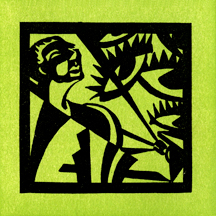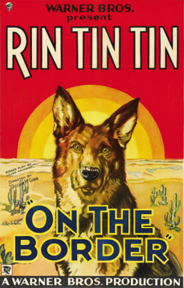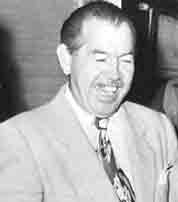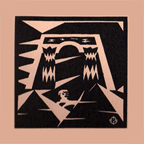Jimmy Starr began his career in Hollywood in the 1920s, writing the intertitles for silent shorts for producers such as Mack Sennett, the Christie Film Company, and Educational Films Corporation, among others. He also toiled as a gossip and film columnist for the Los Angeles Record in the 1920s and from 1930-1962 for the L.A. Herald-Express.
Starr was also a published author. In the 1940s, he penned a trio of mystery novels, the best known of which, The Corpse Came C.O.D., was made into a movie.
In 1926, Starr authored 365 Nights in Hollywood, a collection of short stories about Hollywood. It was published in a limited edition of 1000, each one signed and numbered by the author, by the David Graham Fischer Corporation, which seems to have been a very small (possibly even a vanity) press.
Here’s “Just a Girl in Pictures” from that 1926 collection.
JUST A GIRL IN PICTURES
(A Life Story)
Yes, that’s what I was—just a girl in pictures. And the accent was on the just. But all of this was three long years ago.
Now I’m a real star and have a press agent all my own n’everything. I know you’ve seen me on the screen and you will try to figure out who I am.
Well, I’ll tell you about myself—as much as I dare. I’ve only been a star about—well, it’s nearly two and one-half years now.
Maybe I’m a brunette and maybe I’m a blonde—I’ve been both. And this is about all I’d better tell—right now. I promise you a lot of intimate stuff in the story which follows, but I must use fictitious names.
It was just three years ago this June that I kissed Mother and Dad goodbye on Pier Number Nine of the Pacific Steamship Company, San Francisco. I had just finished at a girls’ school in San Raphael that year, and having nothing to do—I got the movie craze.
I begged Mother to write her friend Betty in Los Angeles and ask if I could spend a month or so with her. And at the same time try my hand at being an actress. Mother and Dad were both good sports and they decided to let me try it—for a little while, at least.
Betty Thorne, Mother’s friend, was a bit older than myself, but she knew the ropes and could put on make-up to perfection. She even looked younger than I at times. And then too, she was a divorcee, which made it more interesting.
I noticed three very good-looking chaps on the boat together and I decided that I was going to have a very pleasant trip. I wandered down to the ballroom—so did they. I knew I was in for a good time.
An hour passed and I was calling them by their first names. I had the instinct of the modern flapper, you see. They, too, were moving to Hollywood for a try at clicking cameras and the vamps of Movieville.
One of them, Harry was his name, always wanted to share his troubles with everyone. So I nick-named him Big-Hearted. He had a gift of gab that would make a press agent turn green with envy. And funny! That boy was a five-reel comedy all by himself. What a laugh he was! And he always laughed at his own jokes, which I later learned was the habit in Hollywood.
I had these three would-be Romeos all the way down. they say there’s three women to every man. Well, I cheated eight women out of a good old time for a day and a night anyway. I’m terribly selfish,—especially with men. I love ’em all—but not too much.
About ten-thirty the next morning, after dancing and flying around most of the night, we saw San Pedro and Wilmington. And as we docked we saw a crowd on a much smaller boat going to Catalina. Immediately Harry wanted to go.
The gang-plank was shoved on board and then came the fun of everybody trying to get off at once. This, I believe, is one of the rules of sea-going etiquette.
Finally, after being bounced from one side to the other, I found myself standing on one of Harry’s newly polished oxfords. I know he was most delighted to find me there. I could tell by the strange expression on his handsome face.
As I was standing there gazing into his deep brown eyes and giving him my address—as if I didn’t think I should—Betty gushed up and smeared lip-stick all over my face.
Al, one of the three, upon seeing Betty, immediately ceased to hunt for my baggage and dashed over for an introduction. I gave it, very coldly, but he warmed up to Betty and before I knew it he was thanking her for a dinner invitation that night.



 Jimmy Starr began his career in Hollywood in the 1920s, writing the intertitles for silent shorts for producers such as
Jimmy Starr began his career in Hollywood in the 1920s, writing the intertitles for silent shorts for producers such as 
